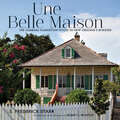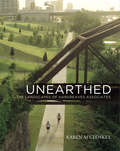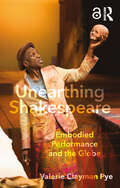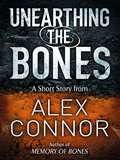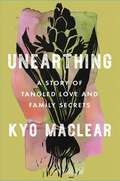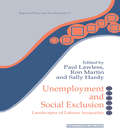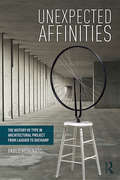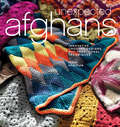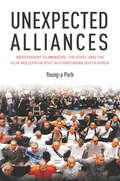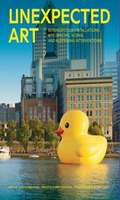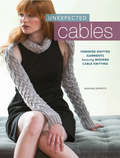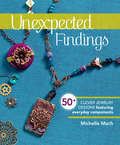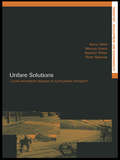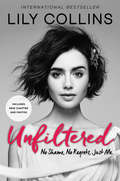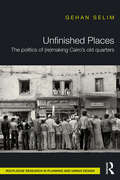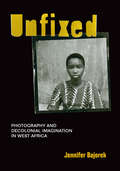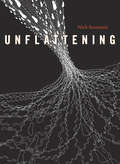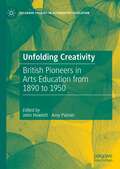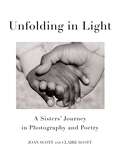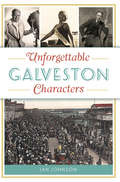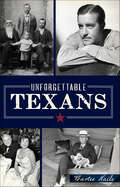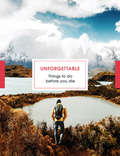- Table View
- List View
Une Belle Maison: The Lombard Plantation House in New Orleans's Bywater
by S. Frederick StarrDescribed in an 1835 bill of sale as une belle maison, the Lombard plantation house is a rare survivor. Built in the early nineteenth century as a West Indian-style residence, it was the focal point of a large plantation that stretched deep into the cypress swamps of what is now New Orleans's Bywater neighborhood. Featuring the best Norman trussing in North America, it was one of many plantations homes and grand residences that lined the Mississippi downriver from the French Quarter. A working farm until the 1800s, its lands were eventually absorbed into the expanding city. After years of prosperity, the entire area of the Ninth Ward, now known as Bywater, sank into poverty and neglect. This is the story of the rise, fall, and eventual resurrection of one of America's finest extant examples of West Indian Creole architecture and of the entire neighborhood of which it is an anchor. Through meticulous study of archives and archeology, the author presents fascinating insights on how residents of this working plantation actually lived. With concrete evidence, the author covers everything from cooking and cuisine to laundering and gardening. It is a story about buildings but also about people. Because pre-Civil War US censuses never listed more than five enslaved persons, all of whom worked in the house, the plantation appears to have depended mainly on hired labor, both African American and Irish. Eventually these groups came to populate the new neighborhood, along with immigrants from Germany, and then by new migrants from the countryside. This book brings together artist John James Audubon; architect of the U.S. capital, Benjamin Henry Latrobe; Lee Harvey Oswald; and Fats Domino in an engrossing story, linking these and other colorful figures to the history of a beautiful, historic home in New Orleans. Profusely illustrated with heretofore unidentified historic photographs and plans, and with color images by master architectural photographer Robert S. Brantley, this book will equally interest inquisitive tourists and long-term residents of the Gulf South, historic preservationists, and urbanists in search of insights on successful redevelopment, architecture and history buffs, and enthusiasts of one of America's most beloved and storied cities.
Unearthed: The Landscapes of Hargreaves Associates (Penn Studies in Landscape Architecture)
by Karen M'CloskeyThe work of landscape architecture firm Hargreaves Associates is globally renowned, from the 21st Century Waterfront in Chattanooga, Tennessee, to London's 2012 Olympic Park. Founded by George Hargreaves in 1983, this team of designers has transformed numerous abandoned sites into topographically and functionally diverse landscapes. Hargreaves Associates' body of work reflects the socioeconomic and legislative changes that have impacted landscape architecture over the past three decades, particularly the availability of former industrial sites and their subsequent redevelopment into parks. The firm's longstanding interest in such projects brings it into frequent contact with the communities and local authorities who use and live in these built environments, which tend to be contested grounds owing to the conflicting claims of the populations and municipalities that use and manage them. As microcosms of contemporary political, social, and economic terrains, these designed spaces signify larger issues in urban redevelopment and landscape design.The first scholarly examination of the firm's philosophy and body of work, Unearthed uses Hargreaves Associates' portfolio to illustrate the key challenges and opportunities of designing today's public spaces. Illustrated with more than one hundred and fifty color and black-and-white images, this study explores the methods behind canonical Hargreaves Associates sites, such as San Francisco's Crissy Field, Sydney Olympic Park, and the Louisville Waterfront Park. M'Closkey outlines how Hargreaves and his longtime associate Mary Margaret Jones approach the design of public places—conceptually, materially, and formally—on sites that require significant remaking in order to support a greater range of ecological and social needs.
Unearthing Shakespeare: Embodied Performance and the Globe
by Valerie Clayman PyeWhat can the Globe Theatre tell us about performing Shakespeare? Unearthing Shakespeare is the first book to consider what the Globe, today’s replica of Shakespeare’s theatre, can contribute to a practical understanding of Shakespeare’s plays. Valerie Clayman Pye reconsiders the material evidence of Early Modern theatre-making, presenting clear, accessible discussions of historical theatre practice; stages and staging; and the relationship between actor and audience. She relays this into a series of training exercises for actors at all levels. From "Shakesball" and "Telescoping" to Elliptical Energy Training and The Radiating Box, this is a rich set of resources for anyone looking to tackle Shakespeare with authenticity and confidence.
Unearthing Shakespeare: Embodied Performance and the Globe
by Valerie Clayman PyeWhat can the Globe Theatre tell us about performing Shakespeare?Unearthing Shakespeare is the first book to consider what the Globe, today’s replica of Shakespeare’s theatre, can contribute to a practical understanding of Shakespeare’s plays. Valerie Clayman Pye reconsiders the material evidence of Early Modern theatre-making, presenting clear, accessible discussions of historical theatre practice; stages and staging; and the relationship between actor and audience. She relays this into a series of training exercises for actors at all levels.From "Shakesball" and "Telescoping" to Elliptical Energy Training and The Radiating Box, this is a rich set of resources for anyone looking to tackle Shakespeare with authenticity and confidence.The Open Access version of this book, available at http://www.taylorfrancis.com, has been made available under a Creative Commons Attribution-Non Commercial-No Derivatives (CC-BY-NC-ND) 4.0 license.
Unearthing the Bones
by Alex ConnorA short story from Alex Connor, author of Memory of Bones - a mystery about an ancient relic.
Unearthing: A Story of Tangled Love and Family Secrets
by Kyo MaclearAn unforgettable memoir about a family secret revealed by a DNA test, the lessons learned in its aftermath, and the indelible power of love—for readers of Dani Shapiro&’s Inheritance and Katherine May&’s Wintering. &“Magnificent...I will never forget it.&” —Dani Shapiro, author of Inheritance &“A mind-altering and supremely generous exploration of kinship, selfhood, memory, and the roots we share across time, space and species.&” —Naomi Klein, author of This Changes EverythingThree months after Kyo Maclear&’s father dies in December 2018, she gets the results of a DNA test showing that she and the father who raised her are not biologically related. Suddenly Maclear becomes a detective in her own life, unravelling a family mystery piece by piece, and assembling the story of her biological father. Along the way, larger questions arise: what exactly is kinship? And what does it mean to be a family? Unearthing is a captivating and propulsive story of inheritance that goes beyond heredity. Infused with moments of suspense, it is also a thoughtful reflection on race, lineage, and our cultural fixation on recreational genetics. Readers of Michelle Zauner&’s bestseller Crying in H Mart will recognize Maclear&’s unflinching insights on grief and loyalty, and keen perceptions into the relationship between mothers and daughters. What gets planted, and what gets buried? What role does storytelling play in unearthing the past and making sense of a life? Can the humble act of tending a garden provide common ground for an inquisitive daughter and her complicated mother? As it seeks to answer these questions, Unearthing bursts with the very love it seeks to understand.
Unemployment and Social Exclusion: Landscapes of Labour inequality and Social Exclusion (Regions and Cities #18)
by Ron Martin Sally Hardy Paul LawlessPersistent high employment and growing labour market inequality have become entrenched features of many European countries. This edited collection of papers focuses on the regional and local dimensions of these problems across the European union as a whole and, more particularly, in the UK. In the addressing the contemporary landscape of unemployment, social exclusion and public policy the contributors highlight several key themes, including:How the process of unemployment and social exclusion have an important local level operation. The increasing gender dimension and counts of unemployment to provide effective guides to the true scale of joblessnessThe need for more local-focused policy interventions to help reduce the problems of unemployment, employment insecurity and low incomes that now characterise many of the advanced countries.
Unexpected Affinities: The History of Type in Architectural Project from Laugier to Duchamp
by Pablo MeninatoWhile the concept of "type" has been present in architectural discourse since its formal introduction at the end of the eighteenth century, its role in the development of architectural projects has not been comprehensively analyzed. This book proposes a reassessment of architectural type throughout history and its impact on the development of architectural theory and practice. Beginning with Laugier's 1753 Essay on Architecture, Unexpected Affinities: The History of Type in the Architectural Project from Laugier to Duchamp traces type through nineteenth- and twentiethth-century architectural movements and thoeries, culminating in a discussion of the affinities between architectural type and Duchamp's concept of the readymade. Includes over sixty black and white images.
Unexpected Afghans: Innovative Crochet Designs with Traditional Techniques
by Robyn ChachulaUnexpected Afghans presents 29 innovative interpretations of a favorite at-home essential. From best-selling author Robyn Chachula comes an in-depth look into crocheting traditional afghans using contemporary techniques, colors and patterns.Expert designers including Kristin Omdahl, Kathy Merrick, Kimberly McAlindin, and many more, provide an abundance of fresh patterns and projects that are perfect for new and advanced crocheters as they start out beginner-friendly and become more complex, allowing a crocheter to build skills and confidence. Designers at any level will enjoy: • A detailed technique's workshop in every chapter including cables, motifs, color, lace, and Tunisian crochet. • Helpful tips from designers for working through each afghan project. • Easy-to-follow charts and diagrams. Along with tons of beautiful afghan projects for all skill levels, you'll find many of your favorite designer's biographies--giving you an exploration into their inspiration.
Unexpected Alliances: Independent Filmmakers, the State, and the Film Industry in Postauthoritarian South Korea
by Young-A ParkSince 1999, South Korean films have dominated roughly 40 to 60 percent of the Korean domestic box-office, matching or even surpassing Hollywood films in popularity. Why is this, and how did it come about? In Unexpected Alliances, Young-a Park seeks to answer these questions by exploring the cultural and institutional roots of the Korean film industry's phenomenal success in the context of Korea's political transition in the late 1990s and early 2000s. The book investigates the unprecedented interplay between independent filmmakers, the state, and the mainstream film industry under the post-authoritarian administrations of Kim Dae Jung (1998-2003) and Roh Moo Hyun (2003-2008), and shows how these alliances were critical in the making of today's Korean film industry. During South Korea's post-authoritarian reform era, independent filmmakers with activist backgrounds were able to mobilize and transform themselves into important players in state cultural institutions and in negotiations with the purveyors of capital. Instead of simply labeling the alliances "selling out" or "co-optation," this book explores the new spaces, institutions, and conversations which emerged and shows how independent filmmakers played a key role in national protests against trade liberalization, actively contributing to the creation of the very idea of a "Korean national cinema" worthy of protection. Independent filmmakers changed not only the film institutions and policies but the ways in which people produce, consume, and think about film in South Korea.
Unexpected Art
by Florentijn Hofman Christian L. Frock Jenny Moussa SpringGraffiti made from cake icing, man-made clouds floating indoors, a luminous moon resting on water. Collected here are dozens of jaw-dropping artworks--site-specific installations, extraordinary sculptures, and groundbreaking interventions in public spaces--that reveal the exciting things that happen when contemporary artists play with the idea of place. Unexpected Art showcases the wonderfully experimental work of more than 50 innovative artists from around the world in galleries of their most astonishing artworks. An unusual package with three different-colored page edges complements the art inside and makes this tour of the world's most mind-blowing artwork a beautiful and thoughtprovoking gift for anyone interested in the next cool thing.
Unexpected Cables: Feminine Knitted Garments Featuring Modern Cable Knitting
by Heather ZoppettiTake knitted cables from heirloom to vavoom!In Unexpected Cables author Heather Zoppetti has crafted a fresh, modern, flattering collection of 18 knitted garments. She perfectly captures the essence of the iconic knitted cable and makes cabled designs decidedly fashion-forward!The book features 3 chapters: Refined, Lace, and Abstract.Refined cables explore classic Aran cables using lightweight yarns, twisted stitches, and feminine shapes.In the Lace section, Heather challenges knitters to marry together these two popular knitting techniques with spectacular results.The Abstract section focuses on unusual construction, direction, and texture in cabled projects that have edgy, urban feel. Sleek garment shapes, an interesting mix of cables and lace, and unusual construction converge to bring the generations-old tradition of cable knitting squarely into the here and now. Knitters will delight in making these intriguing, accessible creations!
Unexpected Findings: 50+ Clever Jewelry Designs Featuring Everyday Components
by Michelle MachGive new life to your jewelry stash in surprising ways. Readers will enjoy this book as it takes a completely new approach to working with findings by focusing on nontraditional uses for them: bead frames become connectors; toggle clasps become pendants; filigree can be rolled to create tube beads or bails; and so much more. Author Michelle Mach offers a thorough overview of the many different findings available, essential tools, and other materials, such as beads, wire, and cords and ribbons. Tips for modifying purchased findings with patinas, beads, hammering, painting, and other techniques is also provided. Fifty projects showcase one or more findings used in a new or unusual way. The designs include necklaces, bracelets, and earrings, some of which can be taken apart and reassembled to become different pieces of jewelry. Basic techniques, such as stringing, simple wirework, and basic metalwork, are also covered along with a thorough list of resources.
Unfare Solutions: Local Earmarked Charges to Fund Public Transport (Transport, Development and Sustainability Series)
by Stephen Potter Peter Nijkamp Marcus Enoch Barry UbbelsTransport policy is an increasingly difficult area for all national governments and regional/local authorities. Tackling car use and realising a sustainable transport system appears to be very difficult. Developing public transport is seen as an increasingly important element in improving the transport system, especially in densely populated areas. At the same time however, governments are under increasing pressure to cut taxation. As a result there is a growing gap between increasing policy need for public transport and government resources to fund that need. This timely book explores one solution to this dilemma, which is the use of local charges and taxes dedicated to support public transport. Unfare Solutions examines how and why such charges have evolved and how they do (or do not) relate to modern transport policy developments and theory. It shows innovative funding techniques developed by both public transport providers and federal and local authorities.
Unfiltered: No Shame, No Regrets, Just Me.
by Lily CollinsIn this groundbreaking debut essay collection, featuring never-before-seen photos, actress Lily Collins—star of Mortal Instruments and Rules Don’t Apply—is opening a poignant, honest conversation about the things young women struggle with: body image, self-confidence, relationships, family, dating, and so much more.For the first time ever, Lily shares her life and her own deepest secrets, underlining that every single one of us experiences pain and heartbreak. We all understand what it’s like to live in the light and in the dark. For Lily, it’s about making it through to the other side, where you love what you see in the mirror and where you embrace yourself just as you are. She's learned that all it takes is one person standing up and saying something for everyone else to realize they’re not alone.By turns hilarious and heartbreaking, Lily’s honest voice will inspire you to be who you are and say what you feel. It’s time to claim your voice! It’s time to live your life unfiltered.
Unfinished Business
by Dana RengaUnfinished Business is the first book to examine Italian mafia cinema of the past decade. It provides insightful analyses of popular films that sensationalize violence, scapegoat women, or repress the homosexuality of male protagonists. Dana Renga examines these works through the lens of gender and trauma theory to show how the films engage with the process of mourning and healing mafia-related trauma in Italy.Unfinished Business argues that trauma that has yet to be worked through on the national level is displaced onto the characters in the films under consideration. In a mafia context, female characters are sacrificed and non-normative sexual identities are suppressed in order to solidify traditional modes of viewer identification and to assure narrative closure, all so that the image of the nation is left unblemished.
Unfinished Places (Re)making Cairo’s Old Quarters: The Politics Of (re)making Cairo's Old Quarters
by Gehan SelimThe Emerging Politics of (Re) making Cairo's Old Quarters examines postcolonial planning practices that aimed to modernise Cairo’s urban spaces. The author examines the expanding field of postcolonial urbanism by linking the state’s political ideologies and systems of governance with methods of spatial representations that aimed to transform the urban realm in Cairo. Adopting an interdisciplinary approach, the study draws on planning, history and politics to develop a distinctive account of postcolonial planning in Cairo following Egypt’s 1952 revolution. The book widely connects the ideological role of a different type of politicised urbanism practised during the days of Nasser, Sadat and Mubarak and the overarching policies, institutions and attitudes involved in the visions for (re) building a new nation in Egypt. By examining the notion of remaking urban spaces, the study interprets the ambitions and powers of state policies for improving the spatial qualities of Cairo’s old districts since the early 20th century. These acts are situated in their spatial, political and historical contexts of Cairo’s heterogeneous old quarters and urban spaces particularly the remaking of one of the city’s older quarts named Bulaq Abul Ela established during the Ottoman rule in the thirteenth century. It therefore writes, in a chronological sequence, a narrative through time and space connecting various layers of historical and contemporary political phases for remaking Bulaq. The endeavor is to explain this process from a spatial perspective in terms of the implications and consequences not only on places, but also on the people’s everyday practices. By deeply investigating the problems and consequences; the strengths and weaknesses; and the state’s reliability to achieve the remaking objectives, the book reveals evidence that shifting forms of governance had anchored planning practices into a narrow path of creativity and responsive planning.
Unfixed: Photography and Decolonial Imagination in West Africa
by Jennifer BajorekIn Unfixed Jennifer Bajorek traces the relationship between photography and decolonial political imagination in Francophone west Africa in the years immediately leading up to and following independence from French colonial rule in 1960. Focusing on images created by photographers based in Senegal and Benin, Bajorek draws on formal analyses of images and ethnographic fieldwork with photographers to show how photography not only reflected but also actively contributed to social and political change. The proliferation of photographic imagery—through studio portraiture, bureaucratic ID cards, political reportage and photojournalism, magazines, and more—provided the means for west Africans to express their experiences, shape public and political discourse, and reimagine their world. In delineating how west Africans' embrace of photography was associated with and helped spur the democratization of political participation and the development of labor and liberation movements, Bajorek tells a new history of photography in west Africa—one that theorizes photography's capacity for doing decolonial work.
Unflattening
by Nick SousanisThe primacy of words over images has deep roots in Western culture. But what if the two are inextricably linked in meaning-making? In this experiment in visual thinking, drawn in comics, Nick Sousanis defies conventional discourse to offer readers a stunning work of graphic art and a serious inquiry into the ways humans construct knowledge.
Unfolding Creativity: British Pioneers in Arts Education from 1890 to 1950 (Palgrave Studies in Alternative Education)
by John Howlett Amy PalmerThis book presents a selection of case studies of pioneers in arts education who were working in the United Kingdom in the period 1890 to 1950. Focusing on music, drama, and visual arts and crafts, the editors and contributors examine the impact these individuals had on developing innovative approaches to these subject areas and how they drew on perspectives that emphasised the need for children’s self-expression. The chapters offer an analysis of the pioneers’ beliefs and values, with a particular emphasis on their ideological positions about identity, nation, and what constituted ‘good taste’. The book further examines how their ideas were disseminated, in so doing interrogating the concept of ‘influence’ in educational theory and practice.
Unfolding in Light: A Sisters' Journey in Photography and Poetry
by Joan Scott Claire ScottA collection of sixty-four black-and-white photographs and sixty-two poems, Unfolding in Light offers a vision of hands as images, symbols, and archetypes, allowing the numinous to shine through the mundane. Sisters Joan Scott and Claire Scott provides an intimate pause that gives the reader a quiet moment to reflect on the meaning of everyday hands: an ill child&’s hands; a dying woman&’s hands; hands of lovers, young and old; hands at work, at play, in pain, in prayer, and in love.
Unforgettable Galveston Characters (American Chronicles)
by Jan JohnsonFrom financiers of the Texas Revolution to contestants in the Pageant of Pulchritude, the shores of Galveston enticed and cultivated a host of memorable men and women. Bishops and bookies, concert pianists and cotton tycoons--all left an indelible print on their remarkable home. Magnolia Willis Sealy and the members of the Women's Health Protective Association reshaped the ravages of the Great Storm into the glories of the Oleander City. The benevolent activism of Norris Wright Cuney transformed the social landscape, while actress Charlotte Walker and painter Boyer Gonzales Sr. extended the island's cultural reach abroad. Jan Johnson keeps company with Galveston's most fascinating characters.
Unforgettable Texans
by Bartee HaileHistory books burst at the seams with stories about Houston, Travis, Crockett and other icons of Texas history. Yet many of the Lone Star State's fascinating figures--well known in life but forgotten in death--remain obscure by omission. This scintillating company includes a World War I spy who became a movie star, the first gringo matador, a West Texas tent showman and the husband-and-wife trick-shot act that amazed audiences for forty years. Some characters cut across the common narrative, like the admiral whose advice might have prevented the attack on Pearl Harbor, the one and only Republican congressman in the first half of the twentieth century, the Klansman Texans elected to the U.S. Senate and the businessman who wrote the longest English-language novel in complete secrecy. Popular columnist and author Bartee Haile brings to life some of the most intriguing Texans who ever slipped through the cracks of history.
Unforgettable Things to do Before you Die
by Steve Watkins Clare JonesYou only get one life. Make it a memorable one.This is the second title in an exciting international bestselling series of books that will help you search out essential sights and experiences around the world.In Unforgettable Things to Do Before You Die, international travel writers and photographers Steve Watkins and Clare Jones draw on their years of experience to select their ultimate trips of a lifetime. This book will introduce you to a host of unusual and amazing activities to be done in fabulous destinations during a break of two weeks or less.Adventures range from searching for pearls in Tahiti, French Polynesia, and dog-sledding through the snowy landscapes of Sweden, to exploring the rainforests of Belize, and sailing down the Nile on an Egyptian felucca. For the less active explorer they offer more relaxed but equally unmissable pursuits, such as watching an opera in the ancient ruins of Verona, Italy, or wine-tasting in Bordeaux, France. Lavishly illustrated with specially commissioned photographs, Unforgettable Things to Do Before You Die is aimed at anyone looking for an inspirational experience of a lifetime.
Ungrateful Mammals
by Dave EggersEggers is one of the most notable writers of his generation, recognized for such bestselling and critically acclaimed books as A Hologram for the King, What Is the What, and The Circle. Before he embarked on his writing career, Eggers was classically trained as a draftsman and painter. He then spent many years as a professional illustrator and graphic designer before turning to writing full-time. More recently, in order to raise money for ScholarMatch, his college-access nonprofit, he returned to visual art, and the results have been exhibited in galleries and museums around the country. Usually involving the pairing of an animal with humorous or biblical text, the results are wry, oddly anthropomorphic tableaus that create a very entertaining and eccentric body of work from one of today’s leading culture makers.
